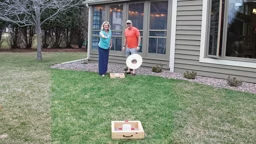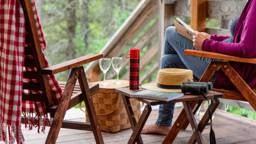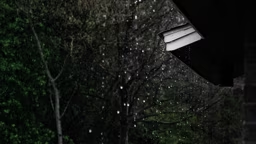Okay, so you’ve gone snowshoeing a few times, enjoyed the whole walking in a winter wonderland aspect and are now ready to take the next step: buying your own snowshoes. But how do you decide which kind to get?
It’s not quite the no-brainer it would seem to be. For just as you can’t shred moguls on a pair of cross-country skis, there are specialized snowshoes to choose from for each specific type of snowshoeing.
Get a Grip
In general, snowshoe manufacturers divide their offerings into four main categories: recreational, adventure, backcountry and fitness. The differences are mainly in the beefiness of the frame and decking (the decking is the surface of the snowshoe that actually sits on the snow) and in the level of traction – or grip in the snow – that each offers.
All four come with toe crampons – metal spikes under the toe cleat that dig into the snow with each step that you take. In addition, they all have secondary devices such as traction bars to keep you from sliding backward if you’re climbing a steep hill. They have stationary ridges too, or smaller spikes located under your heel and along the sides to further improve grip. The level of traction that you need is dependent on the kind of snowshoeing you’ll be doing.
Just for the Fun of It
Recreational snowshoes – geared for casual users who stick mostly to groomed snowshoe trails, flatter terrain and places where the snow is not especially deep – offer fairly basic traction. Thus the crampon spikes might not be as long and the traction bars more rudimentary and not so technical.
This, along with the fact that recreational snowshoes are generally smaller and lighter than say, adventure or backcountry snowshoes, makes them much more user-friendly for families and infrequent snowshoe hikers. In addition, recreational snowshoes have simple bindings that easily accommodate most boots.
It’s not quite the no-brainer it would seem to be. For just as you can’t shred moguls on a pair of cross-country skis, there are specialized snowshoes to choose from for each specific type of snowshoeing.
Get a Grip
In general, snowshoe manufacturers divide their offerings into four main categories: recreational, adventure, backcountry and fitness. The differences are mainly in the beefiness of the frame and decking (the decking is the surface of the snowshoe that actually sits on the snow) and in the level of traction – or grip in the snow – that each offers.
All four come with toe crampons – metal spikes under the toe cleat that dig into the snow with each step that you take. In addition, they all have secondary devices such as traction bars to keep you from sliding backward if you’re climbing a steep hill. They have stationary ridges too, or smaller spikes located under your heel and along the sides to further improve grip. The level of traction that you need is dependent on the kind of snowshoeing you’ll be doing.
Just for the Fun of It
Recreational snowshoes – geared for casual users who stick mostly to groomed snowshoe trails, flatter terrain and places where the snow is not especially deep – offer fairly basic traction. Thus the crampon spikes might not be as long and the traction bars more rudimentary and not so technical.
This, along with the fact that recreational snowshoes are generally smaller and lighter than say, adventure or backcountry snowshoes, makes them much more user-friendly for families and infrequent snowshoe hikers. In addition, recreational snowshoes have simple bindings that easily accommodate most boots.
Make Your Own Snowshoes
So the snow’s started falling, and you’re itching to get out in it, but unfortunately, you left your snowshoes back in town. No problem. We all know that necessity is the mother of invention and with a few quick steps, you can build your own rudimentary snowshoes with materials found in or around your cabin.
First, head outside and look for a small bendable tree, such as an alder or willow. Look around for a good, strong branch that’s about 4 feet long and about 2 inches in diameter. (A sapling will work as well.) Bend the branch into a teardrop or oval shape. Cross the ends in an X-shape and secure them together with string, twine or even shoelaces. Strips of cloth will work too.
Use three more branches to make crosspieces that span the teardrop-shaped branch and support the weight of your foot. Secure these with string also. Then interlace smaller branches lengthwise to provide a sort of decking for the shoe. This will give you flotation on the snow and keep you from sinking in.
After putting your foot on the crosspiece branches, use strong cord or shoelaces to secure each foot to your snowshoe. Voilà – you’re good to go ... for as long as these DIY shoes will hold up, that is. Just don’t trek too far from the safety of your cabin.
So the snow’s started falling, and you’re itching to get out in it, but unfortunately, you left your snowshoes back in town. No problem. We all know that necessity is the mother of invention and with a few quick steps, you can build your own rudimentary snowshoes with materials found in or around your cabin.
First, head outside and look for a small bendable tree, such as an alder or willow. Look around for a good, strong branch that’s about 4 feet long and about 2 inches in diameter. (A sapling will work as well.) Bend the branch into a teardrop or oval shape. Cross the ends in an X-shape and secure them together with string, twine or even shoelaces. Strips of cloth will work too.
Use three more branches to make crosspieces that span the teardrop-shaped branch and support the weight of your foot. Secure these with string also. Then interlace smaller branches lengthwise to provide a sort of decking for the shoe. This will give you flotation on the snow and keep you from sinking in.
After putting your foot on the crosspiece branches, use strong cord or shoelaces to secure each foot to your snowshoe. Voilà – you’re good to go ... for as long as these DIY shoes will hold up, that is. Just don’t trek too far from the safety of your cabin.
Looking for Adventure
Adventure and backcountry snowshoes differ from recreational snowshoes quite a bit. Built for more demanding conditions such as steep slopes, trickier terrain and deeper snow, they offer more sophisticated binding systems and heavier-duty frames and decking. Their crampons and traction systems dig deeper, are more complex and offer more bite too.
While adventure and backcountry sound similar, think of the difference between the two categories this way: Adventure snowshoeing is akin to day hiking whereas backcountry snowshoeing is akin to backpacking.
Adventure snowshoes are geared for most types of terrain, and backcountry snowshoes are built for just about anything you can throw at them – icy peaks and mountain climbs, long steep ascents and descents – and are sturdy enough to withstand carrying heavy loads for long distances. But because they’re often used for extended travel, backcountry snowshoes also need to be somewhat lightweight, so they are usually made with the best materials: high-grade aluminum frames with rubber, or similar material, decking. Because of this, they’re often the most expensive too.
Fit & Fun
Fitness snowshoes, geared for snowshoe racing as well as running on the snow, are another specialized category. Like backcountry snowshoes, they’re made of beefy materials and feature technical bindings that can withstand a beating, but they are smaller, narrower and weigh much less. Their small size helps to shed snow while blasting through the white stuff at an increased pace, but it also means that they’re not conducive to carrying heavier loads or traveling in deep powder.
One Size Does Not Fit All
Because women and children are usually smaller than men, snowshoes for these users are likewise smaller and, inLooking f the case of children’s snowshoes, made of lesser-grade materials. (That’s because they’re just as likely to be used for playing around in the snow as they are for actual snowshoeing.) And to allow for a more natural gait while walking, quality women’s snowshoes are narrower than men’s.
Lastly, snowshoe size is something else to consider when purchasing snowshoes. Major considerations here are the weight of the snowshoe user and the snow conditions. Heavier users and loads will sink deeper into snow than lighter ones, and all users will sink deeper into light fluffy snow than into snow that is dense and compact. The deeper a person is likely to sink in the snow, the bigger the snowshoe required.
But all snowshoe types share one thing in common: they open the door to incredible outdoor experiences.
Mike McQuaide, of Bellingham, Wash., is hoping that one day they’ll come out with motorized hiking boots so that climbing hills will be easier.
Adventure and backcountry snowshoes differ from recreational snowshoes quite a bit. Built for more demanding conditions such as steep slopes, trickier terrain and deeper snow, they offer more sophisticated binding systems and heavier-duty frames and decking. Their crampons and traction systems dig deeper, are more complex and offer more bite too.
While adventure and backcountry sound similar, think of the difference between the two categories this way: Adventure snowshoeing is akin to day hiking whereas backcountry snowshoeing is akin to backpacking.
Adventure snowshoes are geared for most types of terrain, and backcountry snowshoes are built for just about anything you can throw at them – icy peaks and mountain climbs, long steep ascents and descents – and are sturdy enough to withstand carrying heavy loads for long distances. But because they’re often used for extended travel, backcountry snowshoes also need to be somewhat lightweight, so they are usually made with the best materials: high-grade aluminum frames with rubber, or similar material, decking. Because of this, they’re often the most expensive too.
Fit & Fun
Fitness snowshoes, geared for snowshoe racing as well as running on the snow, are another specialized category. Like backcountry snowshoes, they’re made of beefy materials and feature technical bindings that can withstand a beating, but they are smaller, narrower and weigh much less. Their small size helps to shed snow while blasting through the white stuff at an increased pace, but it also means that they’re not conducive to carrying heavier loads or traveling in deep powder.
One Size Does Not Fit All
Because women and children are usually smaller than men, snowshoes for these users are likewise smaller and, inLooking f the case of children’s snowshoes, made of lesser-grade materials. (That’s because they’re just as likely to be used for playing around in the snow as they are for actual snowshoeing.) And to allow for a more natural gait while walking, quality women’s snowshoes are narrower than men’s.
Lastly, snowshoe size is something else to consider when purchasing snowshoes. Major considerations here are the weight of the snowshoe user and the snow conditions. Heavier users and loads will sink deeper into snow than lighter ones, and all users will sink deeper into light fluffy snow than into snow that is dense and compact. The deeper a person is likely to sink in the snow, the bigger the snowshoe required.
But all snowshoe types share one thing in common: they open the door to incredible outdoor experiences.
Mike McQuaide, of Bellingham, Wash., is hoping that one day they’ll come out with motorized hiking boots so that climbing hills will be easier.
 Sandra Cunningham, dreamstime.com
Sandra Cunningham, dreamstime.com  Anna Patiuk
Anna Patiuk  Shawn and Sue Roberts
Shawn and Sue Roberts 









